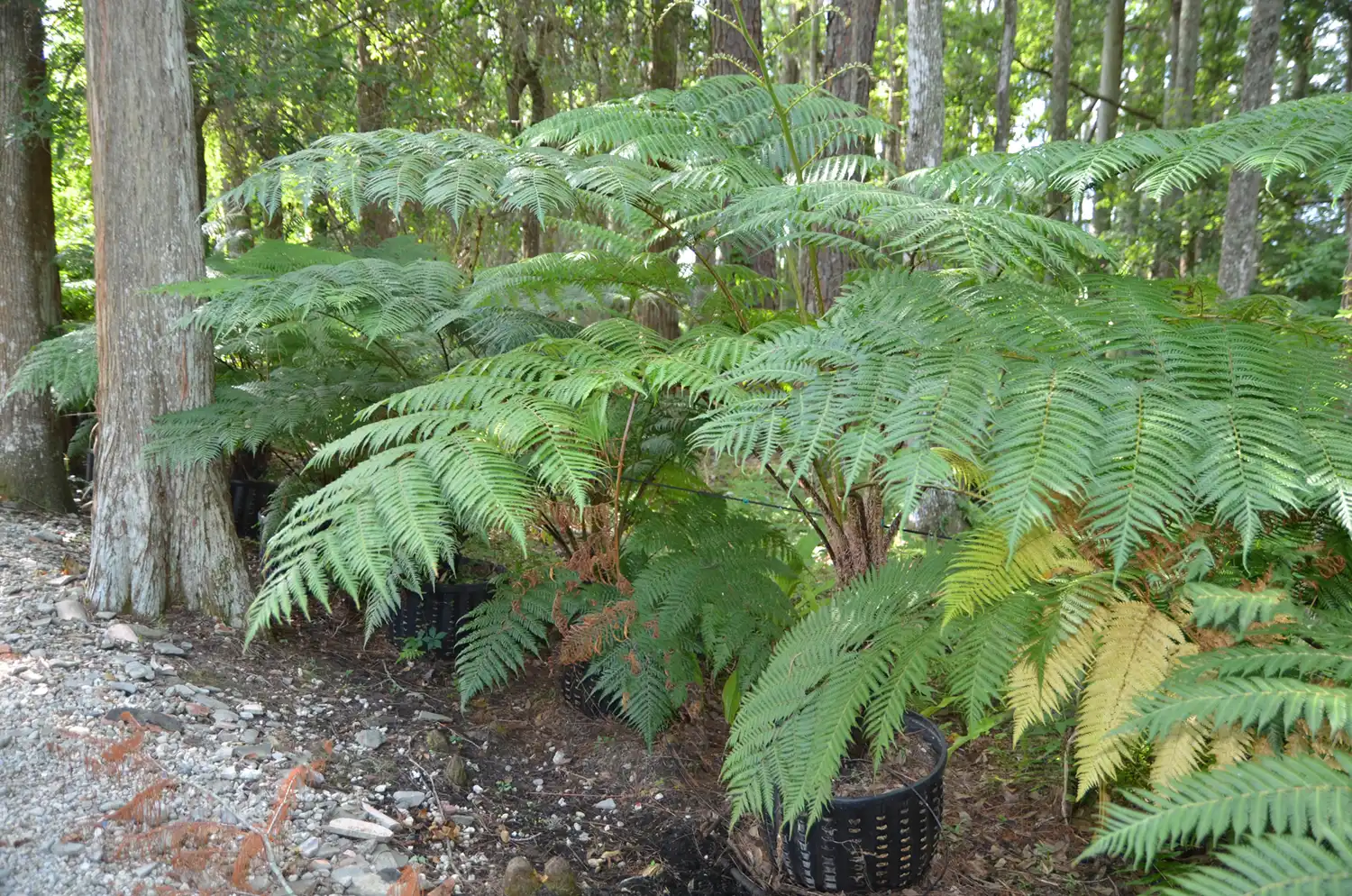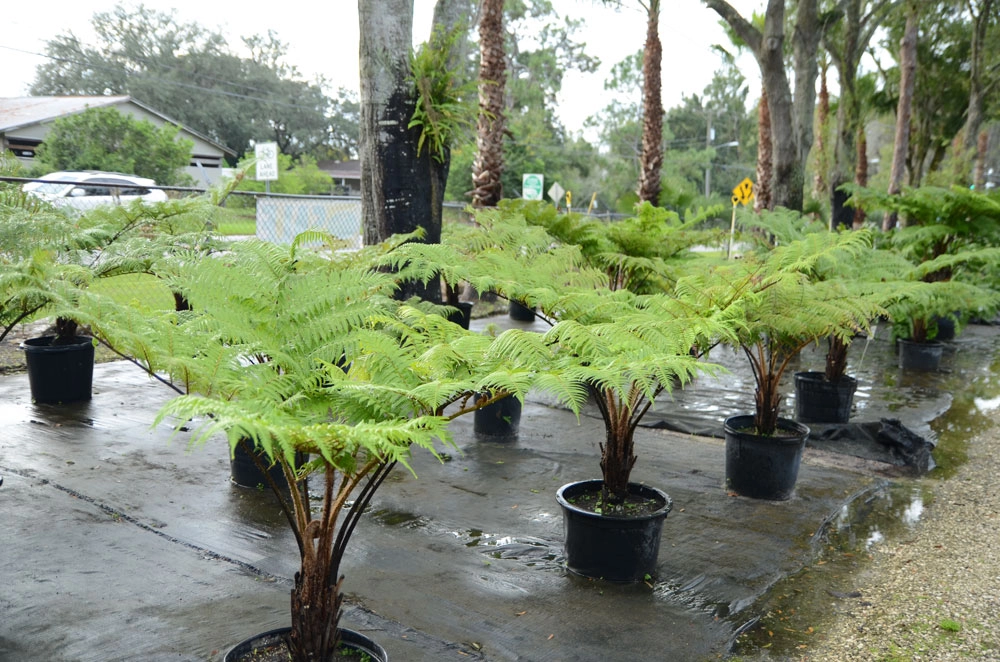
The Australian tree fern, scientifically known as Cyathea cooperi, is a large and striking fern species native to Australia. It belongs to the family Cyatheaceae and is commonly found in the eastern parts of Australia, particularly in Queensland and New South Wales. This fern is also known by various other names, including Cooper’s tree fern, lacy tree fern, and scaly tree fern.
The Australian tree fern is renowned for its impressive size and attractive appearance. It typically grows to a height of about 15 to 25 feet tall, 10 to 12 feet wide; up to 50 feet tall in the wild. The trunk of this fern is erect, cylindrical, and covered with dark brown to black, fibrous scales, giving it a unique and textured appearance. The trunk acts as a support for the large fronds of the tree fern.
The fronds of the Australian tree fern are one of its most distinctive features. They can grow up to 13 feet long (4 m) and are composed of numerous bright green, arching leaflets. The leaflets are pinnate, meaning they are arranged along a central stalk or rachis. The fronds form an elegant and feathery canopy, providing the fern with a graceful and tropical appearance.
The Australian tree fern is adapted to thrive in shady and moist environments, typically found in rainforests or protected gullies. It prefers well-draining soil that retains moisture and has a slightly acidic to neutral pH. This fern can tolerate a range of temperatures but it is not frost-tolerant and may suffer damage or die if exposed to freezing conditions.
In cultivation, the Australian tree fern is popular for its ornamental value. It can be grown in large pots or containers, provided they have enough space for the fern to grow. The fern’s impressive fronds make it an attractive addition to gardens and landscapes, especially in areas with a subtropical or tropical climate.
When it comes to care, the Australian tree fern requires regular watering to maintain moist soil conditions. It prefers partial shade or filtered sunlight and should be protected from strong winds that can damage its delicate fronds. Mulching around the base of the fern helps retain moisture and provides nutrients to the plant.

